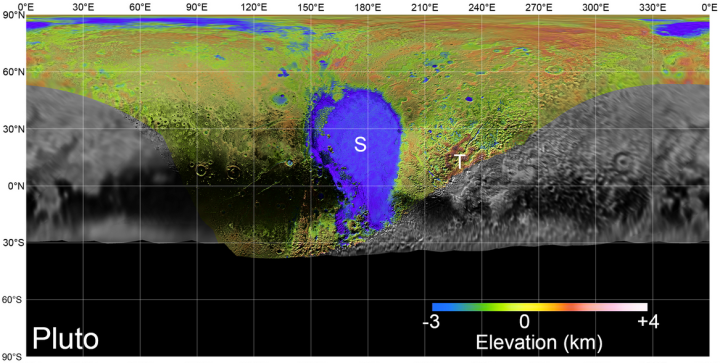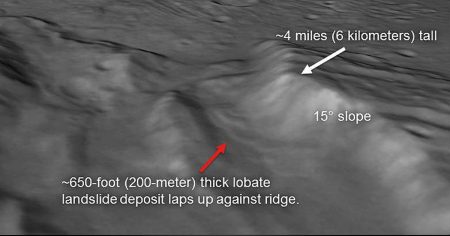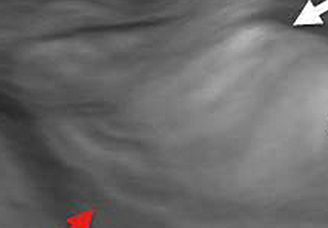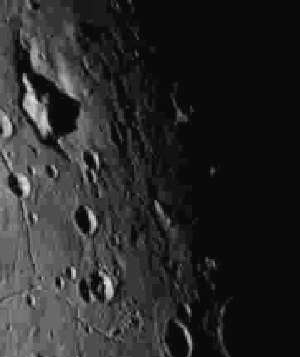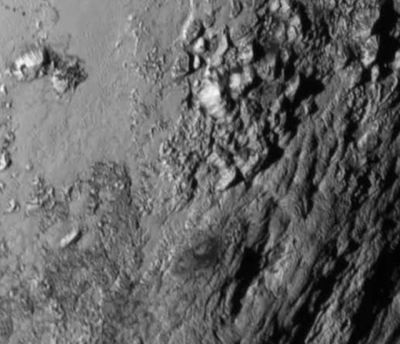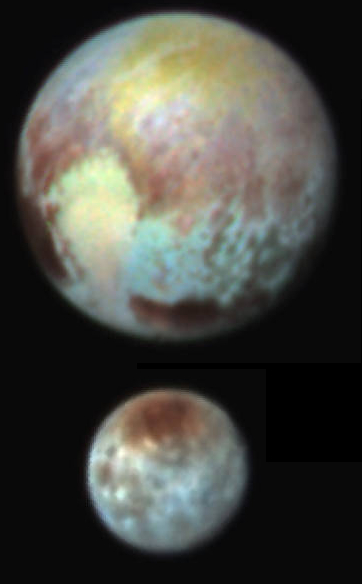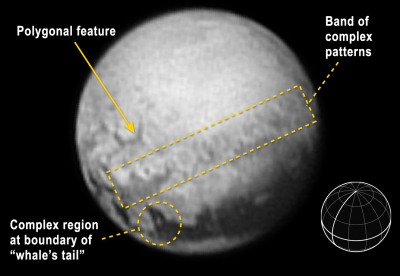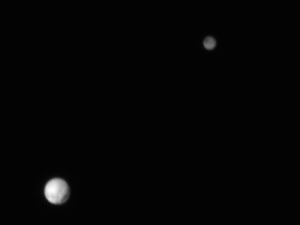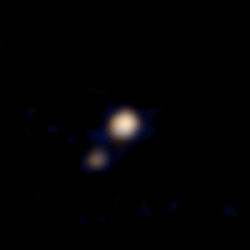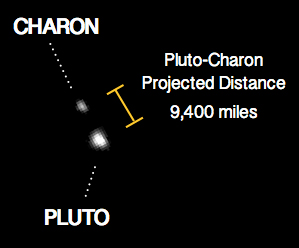New Horizons data suggests the Kuiper Belt is emptier that previously believed
The uncertainty of science: An analysis of data from New Horizons now suggests a paucity of small objects in the Kuiper Belt.
Using New Horizons data from the Pluto-Charon flyby in 2015, a Southwest Research Institute-led team of scientists have indirectly discovered a distinct and surprising lack of very small objects in the Kuiper Belt. The evidence for the paucity of small Kuiper Belt objects (KBOs) comes from New Horizons imaging that revealed a dearth of small craters on Pluto’s largest satellite, Charon, indicating that impactors from 300 feet to 1 mile (91 meters to 1.6 km) in diameter must also be rare.
I therefore wonder how the objects we do find there formed. The volume of space in the Kuiper Belt is gigantic, and if the larger bodies found so far are the bulk of the objects there, what did they coalesce from? Moreover, it seems unlikely that the few large objects we have found there would have been able to clear the region out of small objects.
Overall, this is a fundamental mystery tied directly to how the solar system formed, and illustrates how little we know about that process.
The uncertainty of science: An analysis of data from New Horizons now suggests a paucity of small objects in the Kuiper Belt.
Using New Horizons data from the Pluto-Charon flyby in 2015, a Southwest Research Institute-led team of scientists have indirectly discovered a distinct and surprising lack of very small objects in the Kuiper Belt. The evidence for the paucity of small Kuiper Belt objects (KBOs) comes from New Horizons imaging that revealed a dearth of small craters on Pluto’s largest satellite, Charon, indicating that impactors from 300 feet to 1 mile (91 meters to 1.6 km) in diameter must also be rare.
I therefore wonder how the objects we do find there formed. The volume of space in the Kuiper Belt is gigantic, and if the larger bodies found so far are the bulk of the objects there, what did they coalesce from? Moreover, it seems unlikely that the few large objects we have found there would have been able to clear the region out of small objects.
Overall, this is a fundamental mystery tied directly to how the solar system formed, and illustrates how little we know about that process.

